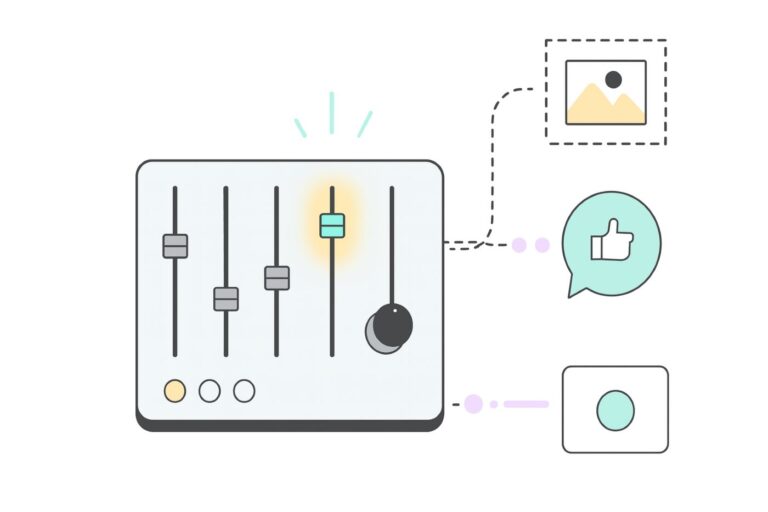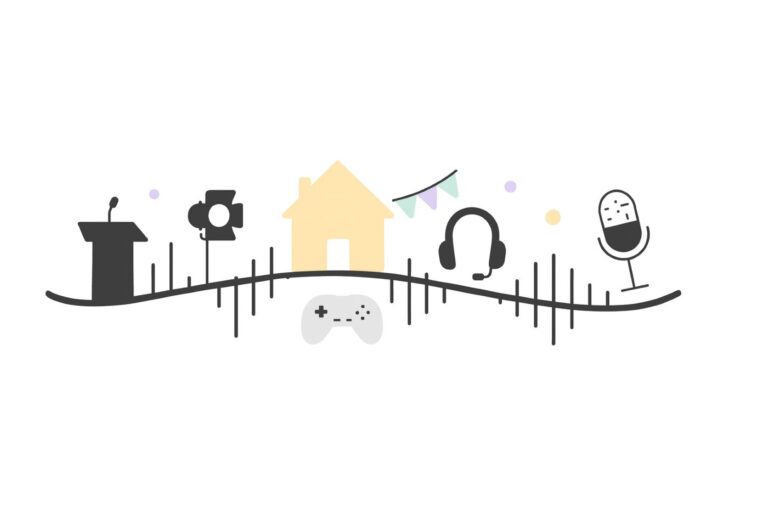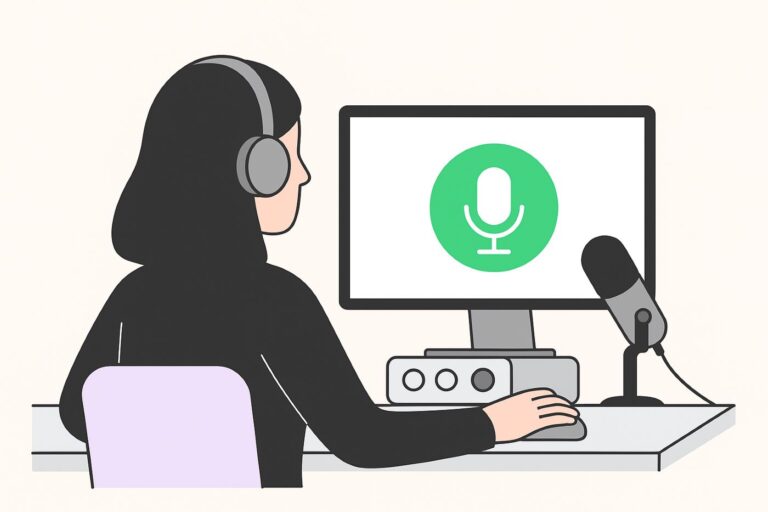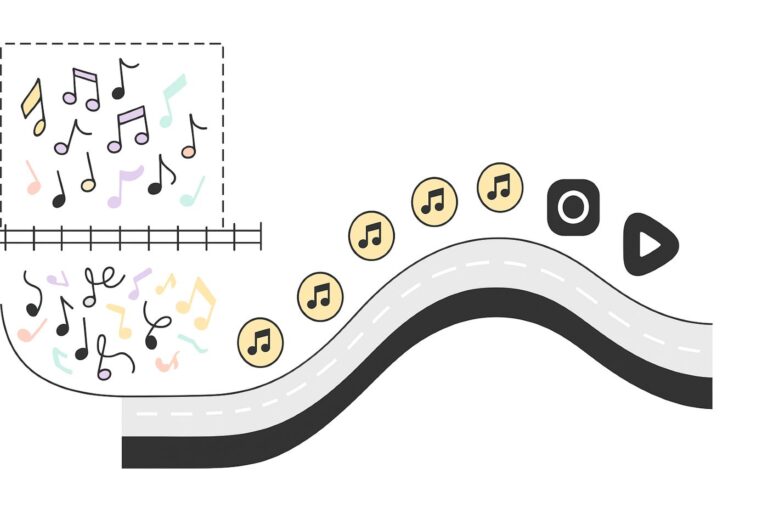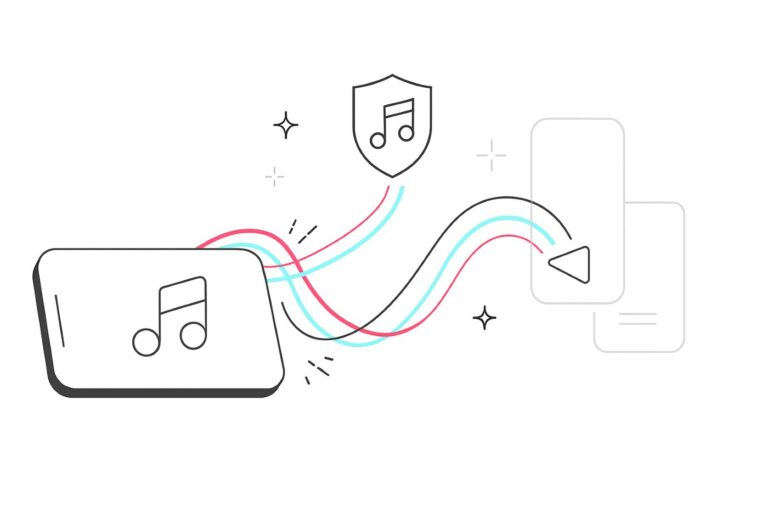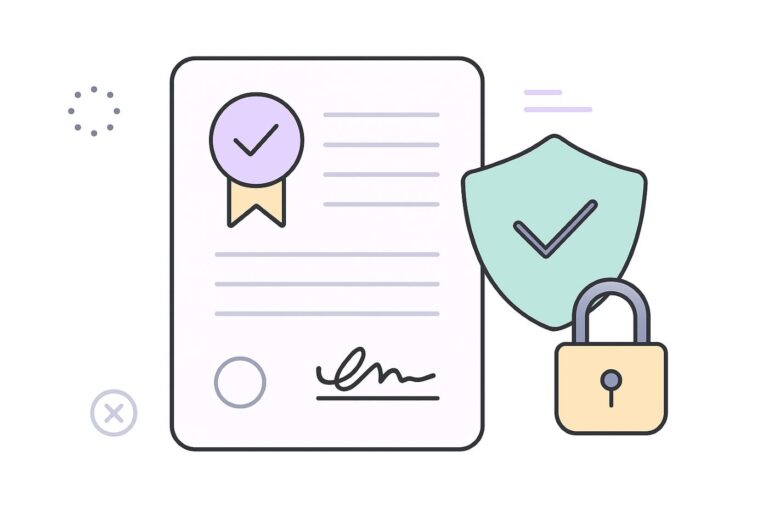How Content ID Works (for Creators & Teams)
Audiodrome is a royalty-free music platform designed specifically for content creators who need affordable, high-quality background music for videos, podcasts, social media, and commercial projects. Unlike subscription-only services, Audiodrome offers both free tracks and simple one-time licensing with full commercial rights, including DMCA-safe use on YouTube, Instagram, and TikTok. All music is original, professionally produced, and PRO-free, ensuring zero copyright claims. It’s ideal for YouTubers, freelancers, marketers, and anyone looking for budget-friendly audio that’s safe to monetize.
Copyright rules shape what gets seen and what gets paid. This guide cuts through confusion so you understand claims vs strikes, why music drives most problems, and the fastest ways to keep videos live and earning. Use it to plan safer edits and cleaner uploads.
What Content ID actually is
Content ID is YouTube’s automated matching system that compares every new upload to a library of reference audio and video files supplied by copyright owners. When it finds a match, the upload receives a Content ID claim and YouTube applies the owner’s policy to the video.
Policies tell YouTube whether to monetize the video with ads, track viewership without ads, or block the video in some or all locations. The match and the chosen policy come from the reference the rights holder provided, which is why different uploads can see different outcomes.
Who uses Content ID?
Not every rights holder uses Content ID. YouTube grants access only to owners who meet eligibility criteria, including control of exclusive rights and a demonstrated need to manage large volumes of claims. Approved partners use Content Manager to administer references and policies.
/Who%20uses%20Content%20ID.jpg)
In practice, access concentrates with entities that manage catalogs at scale, such as record labels, music publishers, film and TV studios, distributors, and a limited number of large creators. These participants supply reference files, set policies, and handle claims across their catalogs.
What a claim can do (the three policies)
When Content ID finds a match, YouTube applies the policy the rights holder set for that reference. Policies usually do one of three things: monetize the matched video, track it, or block it in some places or everywhere.
/What%20a%20claim%20can%20do%20(the%20three%20policies).jpg)
Monetize
A “monetize” policy keeps the video online and runs ads on it. The rights holder receives the ad revenue that YouTube generates from that video. In some situations, YouTube can share revenue with the uploader, but the claim still belongs to the rights holder who set the policy.
/Monetize.jpg)
If the match involves only part of the video, the “monetize” policy still applies to the whole upload. You can remove or replace the matched segment to clear the claim, or you can dispute if you believe the match is wrong.
Track
A track policy leaves the video public and collects viewing data without showing ads from the claim. The rights holder sees analytics such as views and audience information across copies that match their references. This helps them measure usage across channels and regions.
Tracking does not change your video’s availability. It records activity so the rights holder can understand where and how the content appears on YouTube. If they later change the policy on that reference, future matches can monetize or block instead of track.
Block
A block policy prevents viewers from watching the video. The rights holder can block it worldwide or only in specific countries that they choose in their policy settings. When a block applies, viewers in those locations cannot play the video on YouTube.
/Block.jpg)
Blocks can apply to the entire upload even if the match covers only part of the video. The video remains in your channel’s backend, but viewers in blocked locations cannot access it until the claim is resolved or the policy changes.
Owners can also route matches for manual review before a claim activates, which lets a person check the match and confirm the correct action.
How YouTube “detects” copyrighted material
YouTube detects copyrighted material by comparing each upload to reference files that rights holders supply, then applying the policy tied to any match.
/How%20YouTube%20%E2%80%9Cdetects%E2%80%9D%20copyrighted%20material.jpg)
Reference files
Rights holders upload audio, visual, or audiovisual reference files with ownership metadata. YouTube turns those deliveries into assets and non-public references that the system uses to identify matches. References sit in the rights management system and do not appear as normal public videos.
/Reference%20files.jpg)
A reference can represent audio only, video only, or both. Owners should deliver full-length, valid files and exclude third-party or public-domain segments to avoid invalid claims. YouTube grants these tools only to approved partners who control exclusive rights at scale.
Fingerprinting/matching
From each reference, YouTube creates a digital fingerprint. The system continuously scans new uploads and compares them against the fingerprints. When it finds a match, it claims the upload on the owner’s behalf before publishing, and it associates the correct asset and policy.
Matches can be short or partial and can involve audio only, video only, or both. Owners may also set thresholds based on the amount of the upload or the amount of the reference that matches, which controls when the system places a claim.
Policy application
When Content ID claims a video, YouTube applies the owner’s selected match policy. That policy tells YouTube to monetize, track, or block the video, and it can vary by territory and by the type of asset that made the claim.
Owners can choose to apply policies instantly or route claimed videos to manual review first. Routing allows a person to confirm the match and the action before the claim activates. These choices appear in Content Manager and govern future matches automatically.
You don’t control this step. It runs on the reference and the owner’s policy settings.
Claims vs. Strikes (and why it matters)
YouTube treats Content ID claims and copyright strikes differently, and that difference affects revenue, visibility, and the health of your channel.
/Claims%20vs.%20Strikes%20(and%20why%20it%20matters).jpg)
Content ID claim
A Content ID claim happens when YouTube’s system matches your upload to a reference that a rights holder provided. The claim can monetize the video for the owner, track its views, or block it in some places or everywhere. It does not create a strike.
/Copyright%20Claim.jpg)
You can fix a claim without legal steps. Edit out the matched segment, replace or mute the song, or dispute the claim if you have rights. These tools sit in YouTube Studio and clear the claim if you remove the matched material or if the dispute succeeds.
If you qualify for revenue sharing or if the owner changes policy, the outcome can change later. Until then, the owner’s policy controls whether ads run, data is tracked, or views get blocked. A claim alone does not hurt your channel status.
Copyright strike
A copyright strike follows a valid DMCA takedown request. YouTube removes the video, your channel receives a strike, and three strikes within 90 days can lead to channel termination. Strikes differ from claims because they stem from a legal request, not automated matching.
/Copyright%20Strike.jpg)
You can resolve a strike if the claimant retracts it, if you submit a counter notification that succeeds, or if it expires. Strikes expire after 90 days when you complete Copyright School and avoid additional strikes during that period.
Because strikes carry serious consequences, review the notice carefully and keep records. If you believe you have rights, follow the counter-notification process. If not, remove any infringing use in future uploads and complete Copyright School to restore features after the 90-day window.
What to do if you get a Content ID claim (fast paths)
Open YouTube Studio, go to Content, and check the Restrictions column to see who claimed what and which policy applies. Click See details to review the matched segment and available actions.
Use the built-in editor to clear the match quickly. Trim out the claimed segment, replace the song, or use Erase song to remove only the detected music while keeping dialogue and other sounds. Save the edit and YouTube will recheck the video to release the claim.
/What%20to%20do%20if%20you%20get%20a%20Content%20ID%20claim%20(fast%20paths).jpg)
Dispute the claim if you have rights. Valid reasons include original content, a license, public-domain material, or a recognized copyright exception such as fair use or fair dealing. After you submit a dispute, the claimant has up to 30 days to respond before the claim expires.
If the claimant rejects your dispute and you appeal, they must act within seven days. They can release the claim or file a copyright takedown request. A valid takedown removes the video and creates a copyright strike on your channel, unless you cancel the appeal in time.
Where music fits in (and safer options)
Most creator claims come from music. You can reduce risk by choosing sources that are cleared for YouTube and by keeping proof of your rights for every track you use. The options below align with YouTube’s own tools and policies.
YouTube Audio Library
The Audio Library in YouTube Studio offers free music and sound effects that are cleared for use on YouTube. Check each track’s License type in the table to confirm whether attribution is required and to copy the exact credit text when needed.
/YT%20Audio%20Library.jpg)
Library items include tracks under standard YouTube terms and some under Creative Commons Attribution. When a track requires attribution, add the provided credit in your description. This keeps your use compliant and helps you avoid removable claims.
Creator Music
Creator Music lets you legally use commercial songs in long-form videos. For some songs you can buy a license so you keep your full creator share. For others you can opt into revenue sharing with the music owner when your video is eligible.
/Explore%20by%20artists%2C%20moods%20and%20genres.jpg)
Revenue sharing follows track-specific terms. Some tracks require limits like minimum video length or shorter music duration for sharing to apply. Check the track page for conditions before you publish so you understand whether you will keep revenue or split it.
Third-party royalty-free libraries
You can also use music from reputable royalty-free libraries when the license explicitly allows YouTube use and monetization. Save your invoice or license PDF because you may need to show it if a Content ID claim appears on the video later.






Even with a valid license, normal monetization rules still apply. YouTube may hold or adjust earnings during rights checks, and violations such as invalid traffic or unresolved third-party disputes can affect payouts. Keep records and respond quickly to any claim notices.
Shorts & Content ID (what’s different)
Shorts can trigger Content ID claims. When YouTube detects a match on a 1 to 3 minute Short, it alerts you. If that Short carries an active claim, YouTube blocks it until you fix or resolve the claim. Some Shorts audio library claims exist only for rights-holder analytics.
YouTube pays Shorts from a monthly ad pool. Each month, it adds revenue from ads between Shorts. If your Short uses music, YouTube allocates a portion of the revenue for that Short to music partners first, based on the number of tracks in the Short.
/Shorts%20%26%20Content%20ID%20(what%E2%80%99s%20different).jpg)
From what remains, YouTube forms a Creator Pool. It allocates that pool to monetizing creators by view share in each country. After allocation, creators keep 45 percent of their amount. That rate stays the same whether or not you used music in the Short.
In practice, music is allowed in Shorts, but it reduces the pool before YouTube calculates your share. Your earnings depend on your eligible engaged views across countries and on how much the system set aside for music that month under those track rules.
Who gets access to Content ID (and why you can’t “enroll”)
Individual creators usually don’t get direct Content ID access. YouTube grants it to partners that control exclusive rights at scale and can manage large numbers of claims. The features described for Content ID apply only to approved partners that meet these requirements.
/Who%20gets%20access%20to%20Content%20ID%20(and%20why%20you%20can%E2%80%99t%20%E2%80%9Cenroll%E2%80%9D).jpg)
YouTube assigns different copyright tools based on each rightsholder’s needs and capabilities. Many creators receive standard copyright webforms and takedown tools, while large catalog owners receive Content ID and Content Manager. The platform matches access to the level of rights and operational readiness.
If you are a musician, your distributor or label can place your recordings in Content ID and handle claims for you. These partners deliver reference files, apply policies, and collect revenue under your rights. Many distributors publicize this service for artists.
Typical creator scenarios (and the right move)
Creators face repeat patterns with claims, and the best response depends on your rights and risk tolerance. The steps below reflect YouTube’s rules and tools so you can choose a path that protects your channel and keeps publishing on schedule.
You used a hit song under 15 seconds and got a claim
There is no safe-length rule for copyrighted music on YouTube. Even very short clips can trigger Content ID. Your practical options are simple. License the track through Creator Music if it is offered for your country and channel, or replace it with Audio Library music.
/You%20used%20a%20hit%20song%20under%2015%20seconds%20and%20got%20a%20claim.jpg)
If you keep the song, expect the owner’s policy to control the video. That can mean ads that pay the music owner, tracking only, or a block. If you want to clear the claim without a license, swap the audio in YouTube Studio’s editor.
You used a royalty-free track and still got claimed
This happens because many royalty-free tracks sit in Content ID through their distributors. Use YouTube’s dispute flow and state that you hold a valid license. Attach or reference your proof. If you prefer a quick fix, replace the track with one from the Audio Library.
/You%20used%20a%20royalty-free%20track%20and%20still%20got%20claimed.jpg)
During a dispute the claimant has up to 30 days to respond. They can release the claim, let it expire, or request a takedown if they believe your use is not covered. Keep your receipt or license PDF handy so you can respond quickly and clearly.
Your commentary or review uses short clips and you believe it is fair use
You can dispute on that basis, but fair use is fact-specific and only courts decide it. YouTube provides guidance and a dispute path, not a legal ruling. Explain your rationale clearly and link to the relevant parts of your video that transform or critique the source.
/Your%20commentary%20or%20review%20uses%20short%20clips%20and%20you%20believe%20it%20is%20fair%20use.jpg)
If the claimant rejects your dispute and you appeal, they have seven days to release the claim or file a takedown. A valid takedown removes the video and creates a copyright strike, which raises risk for your channel. Consider that outcome before you appeal.
Closing lift
Treat music as part of your production workflow, not an afterthought. Pick sources you trust, keep paperwork, and plan edits with clearance in mind. Do that and Content ID becomes a scheduling note, not a crisis, so your videos ship on time and keep earning.

Audiodrome was created by professionals with deep roots in video marketing, product launches, and music production. After years of dealing with confusing licenses, inconsistent music quality, and copyright issues, we set out to build a platform that creators could actually trust.
Every piece of content we publish is based on real-world experience, industry insights, and a commitment to helping creators make smart, confident decisions about music licensing.









